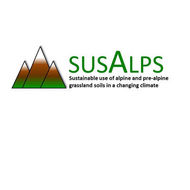Almen in Zeiten des Klimawandels - Schutz der Artenvielfalt durch (Wieder-) Beweidung? Die Fallstudie Brunnenkopfalm im Ammergebirge (2021)
von Heßberg A., Jentsch A., Dannenmann M.
Naturschutz und Landschaftsplanung (NuL), 53 (3), 28-36
Abstract
High alpine pastures and climate change – Protecting biodiversity through (re-)grazing? The case study of Brunnenkopfalm in the Ammergau Alps.The abandonment of traditional alpine farming on high mountain pastures (Alms) is the strongest land use change in the European Alps. Besides the loss of a centuries- to millennia-old cultural landscape, such abandonment leads to undesired changes in soil functions and a loss of biodiversity as well as recreational ecosystem services. Recently, climate change has been facilitating faster woody encroachment onto abandoned Alms and, ultimately, reforestation.
In 2018, we started to restore Brunnenkopfalm in the Ammergau Alps after 63 years of abandonment. By resuming an extensive grazing regime with traditional cattle breeds (Murnau-Werdenfelser, Tiroler Grauvieh), we are currently assessing the impacts of revitalization on soil functions, fresh water quality, recreational services, and plant and animal diversity.
Here we synthesize the first results after two years of extensive regrazing. Apart from positive impacts on recreation and tourism, we would like to highlight the activities at Brunnenkopfalm as an important and unique aspect of the entire biodiversity of the Ammergau Alps. Soil biochemical cycles and freshwater quality remained unchanged so far, although we expect long term changes. Thus far, the revitalization of abandoned Alms seems to be a valuable approach for preserving biodiversity and conserving traditional cultural landscapes in general.
